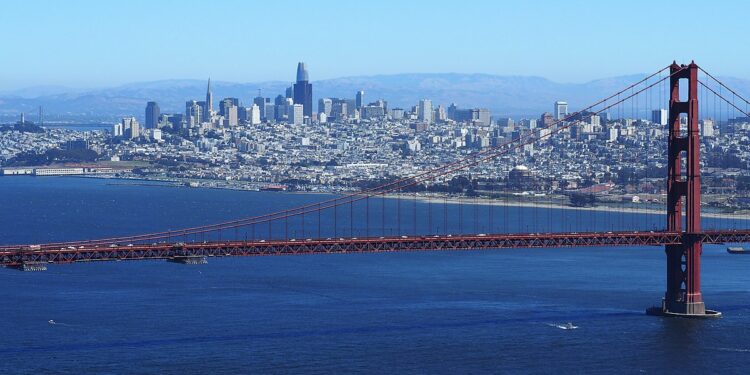A 4.3 magnitude earthquake struck the San Francisco Bay Area early Monday morning, waking residents across the region and prompting temporary transit disruptions as officials conducted safety inspections.
The earthquake occurred just east-southeast of Berkeley shortly before 3 a.m. Pacific Time, with more than 24,000 people reporting they felt the tremor according to the United States Geological Survey.
Bay Area residents posted on social media about feeling their homes shake during the early morning hours. Several Berkeley stores sustained minor damage, including broken windows and merchandise knocked from shelves.
Bay Area Rapid Transit announced on social media that trains were operating at reduced speeds while completing mandatory safety track inspections. The transit agency warned commuters to expect systemwide delays of up to 20 minutes throughout the morning.
San Francisco’s Department of Emergency Management reported an increase in 911 calls from people who felt the shaking but confirmed no injuries had been reported within city limits. Officials also stated they had not received any major damage reports.
Mayor Dan Lurie acknowledged the earthquake on social media, stating that “first responders are assessing any impact to our city, and we will give an update later today.”
The earthquake’s effects extended well beyond the immediate Bay Area. News stations reported that residents as far south as Salinas, approximately 100 miles from Berkeley, felt the tremor.
“Things were shaking in our newsroom,” posted Dave Clark, a KTVU-TV news anchor. “It caught everyone off guard.”
Brayden Murdock of the National Weather Service in Monterey characterized the earthquake as typical for the region’s seismic activity. “As far as earthquakes go, this is kind of the ones where people feel them, but there’s not a whole lot of impacts to them,” Murdock explained.
The early morning timing maximized the number of people who felt the earthquake, as most residents were in their homes and more likely to notice the shaking compared to daytime hours when people might be commuting or in offices.
Emergency management officials continue monitoring for any delayed reports of damage or infrastructure impacts as the region begins the workweek.
The earthquake serves as a reminder of ongoing seismic activity in the Bay Area, where residents regularly experience minor tremors due to the region’s location along multiple active fault lines.






